by Diahan Southard | Nov 10, 2014 | 01 What's New, Digital Archives, Military, Photographs
Recently listener Stacy sent us links to two fabulous collections of historical photos. The stories they tell–and the back story of one of the photographers–are just stunning.
Civil War Soldiers
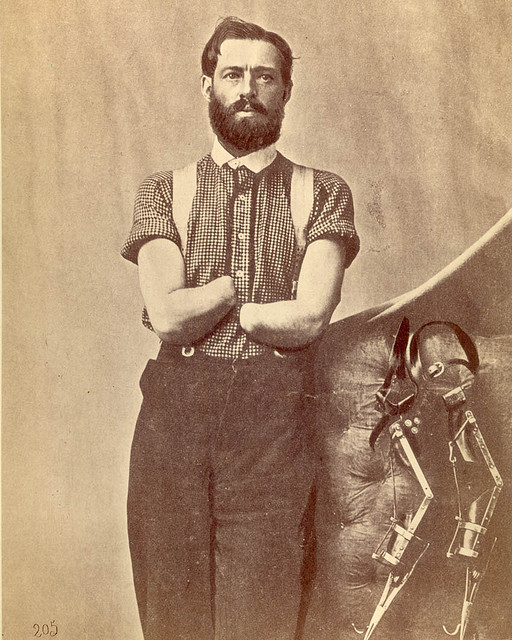
Pvt. Samuel Decker, SP 205, National Museum of Health and Medicine. Pvt. Samuel H. Decker, Company I, 4th US artillery. Double amputation of the forearms for injury caused by the premature explosion of a gun on 8 October 1862, at the Battle of Perryville, KY. Shown with self-designed prosthetics. Photo ID: SP 205. Source Collection: OHA 82 — Surgical Photographs. Repository: National Museum of Health and Medicine, Otis Historical Archives.
The first collection is a sobering visual record of wounded Civil War soldiers. The National Museum of Health and Medicine has posted this collection online.
“From missing fingers and hands to completely amputated legs, the portraits show solemn soldiers posing with what remains of their bodies,” writes Gannon Burgett, the author of this article about the collection. “Some of the portraits were captured by hospitals, as a way of showing how their surgical procedures had turned out; others were commissioned by the soldiers themselves as a memorabilia of sorts.”
It struck me how young some of these soldiers were, and how for many of them, their injuries would have made them unable to earn a living.
Settlers of the American West
In the late 1800s-early 1900s, Solomon Butcher photographed settlers of the Great Plains of the American West. Aware that he was capturing history in the making, he posed settlers in front of their sod homes, with their tools or livestock (and one family with their pump organ). The wide expanse of sky and sun behind these sun-hardened settlers places them squarely in their harsh natural environment.
About 3000 Butcher photographs are now online at the Library of Congress’ American Memory site, one of the only visual records of the settling of the Great Plains, mostly thanks to the generous land ownership terms of the Homestead Act. Most of the photographs are labeled–was your ancestor among them?
The story of the man behind the camera mirrors the outright failures and delayed success of the settling of the West itself. Read his story here and see if you agree with me that the time he knocked himself out trying to save his burning home sort of epitomizes his entire life.
These really are photographs you don’t see every day! Some are grim–but they illustrate the realities of our ancestors’ lives in ways that sometimes the most vivid written descriptions can’t capture. Thanks for sending these links, Stacy!
by Diahan Southard | Nov 7, 2014 | 01 What's New, Beginner, Listeners & Readers, Research Skills, Trees
Recently, I heard from Shirley in Austin, Texas (U.S.) with a question about how her relatives are related to each other:
“My GGM (Caroline ‘s) great grandfather (Franz Joseph) is the same as my GGF (Eduard ‘s) grandfather (Franz Joseph). How would they be related to each other? Half 2nd cousin twice removed?
The relative in common (Franz Joseph) and his same wife, had two sons: Franz Carl who is Eduard’s Father, and Johan Anton, who would be Caroline’s Grandfather.”
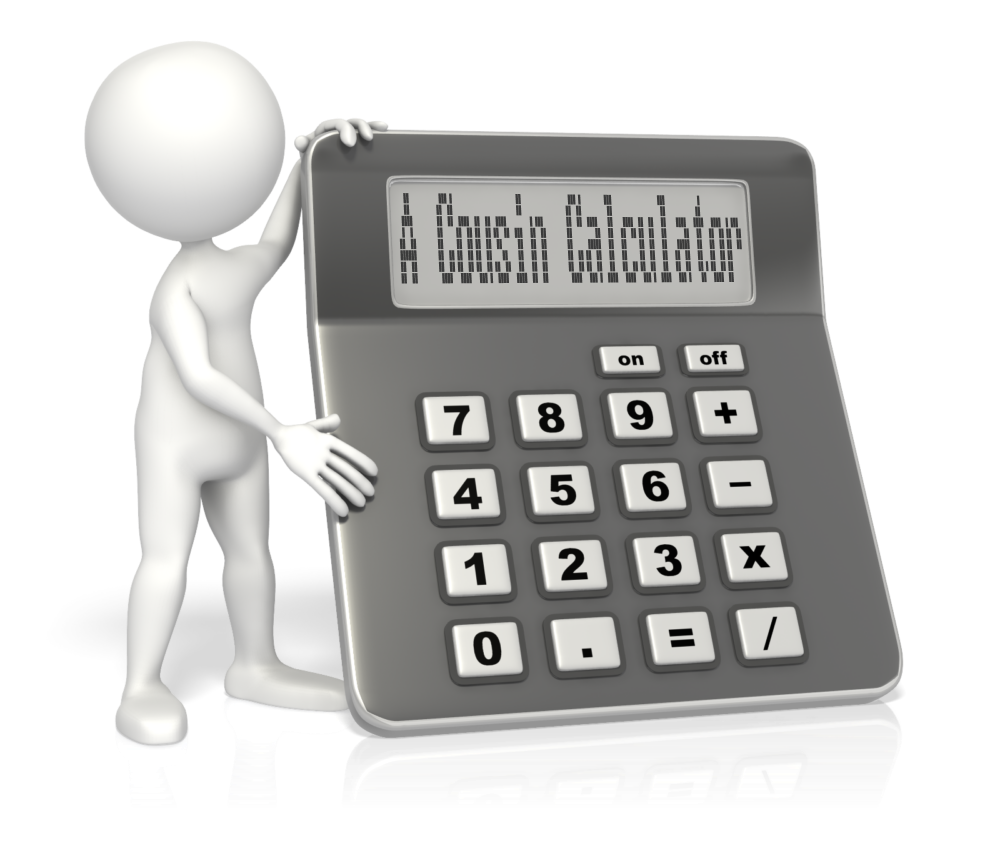
My answer:
I like this Cousin Calculator tool (also called a relationship calculator) at Searchforancestors.com. If Caroline is the Great Grand daughter of Franz Joseph and and Eduard is the Grandchild of Franz Joseph, then according to the Cousin Calculator they are first cousins one time removed. Hope that helps!
What kind of complicated or double family relationships have YOU discovered on your family tree? Enter them into the cousin calculator. Then tell us how they’re related on the Genealogy Gems Facebook page!
by Diahan Southard | Nov 4, 2014 | 01 What's New, Digital Archives, Military, Newspaper
If you research ancestors in the U.S., you’ve probably already used the Library of Congress’ Chronicling America website for searching digitized newspapers. Now they’ve added a new feature: you can subscribe to receive “old news” on many of your favorite historical topics!
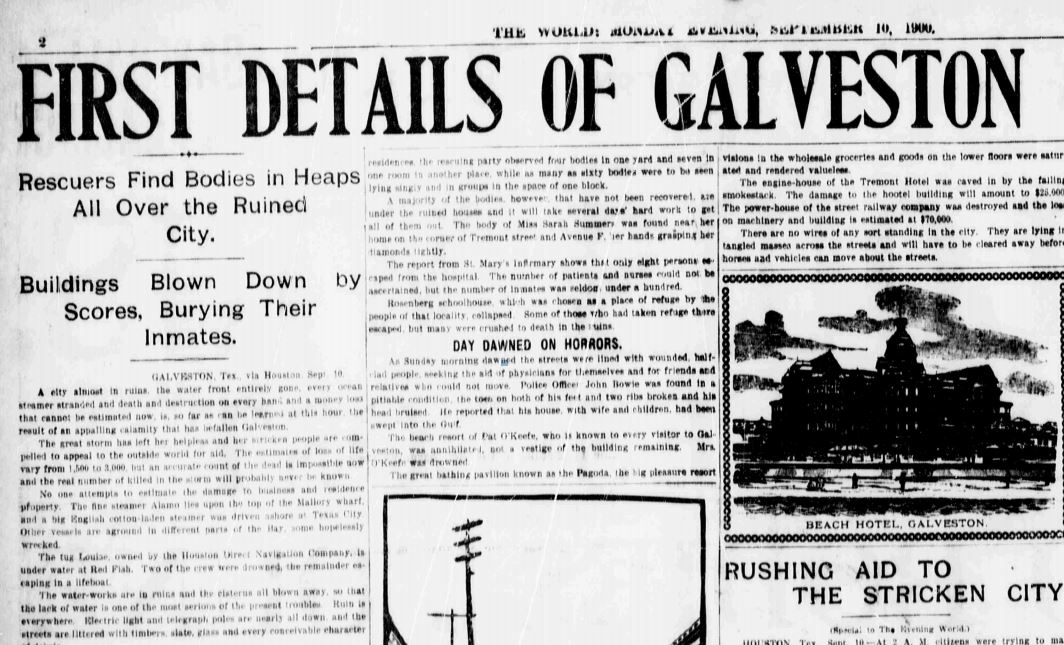
The Evening World (New York, NY), Sept 10, 1900, Evening Edition, Page 2. Digitized image from Chronicling America.
Here’s how it works. You can sign up for weekly notifications that highlight interesting and newly-added content on topics that were widely covered in the U.S. press at the time. (Click here to see a list of topics.)
My favorite family history-related topics are natural disasters (like the Chicago fire or Galveston flood), war topics (from Appomattox to World War I) and civil and human rights events (from the Railroad Strike of 1886 to Ellis Island to coverage of Pullman porters). But there are a lot of topics that might relate to your family: industrialization (electric cars!), arts, sports (think Babe Ruth and the Boston Marathon), major crimes and trials, politics, holidays and public celebrations and public works and technology marvels (like the Panama Canal or Titanic).
To subscribe, just use the icons at the bottom of the Chronicling America home page.
Learn more about finding your ancestors in the newspaper in Lisa’s book, How to Find Your Family History in Newspapers. She walks you through the process of determining which newspapers might mention your ancestors and where to find those papers (both online and offline). You’ll learn in detail about Chronicling America and more about other free and subscription options for searching online newspapers. Best of all, Lisa shares mouthwatering examples from her own research that show you why newspapers can be such a valuable source of information on our family history.
by Diahan Southard | Oct 26, 2014 | 01 What's New, Google Earth, History, Maps
When Liberian national Thomas Eric Duncan was diagnosed with Ebola it was unnerving for everyone here in the U.S. As a new Dallas area resident, and someone who was hopping from plane to plane for a Fall series of speaking engagements, it definitely gave me pause.
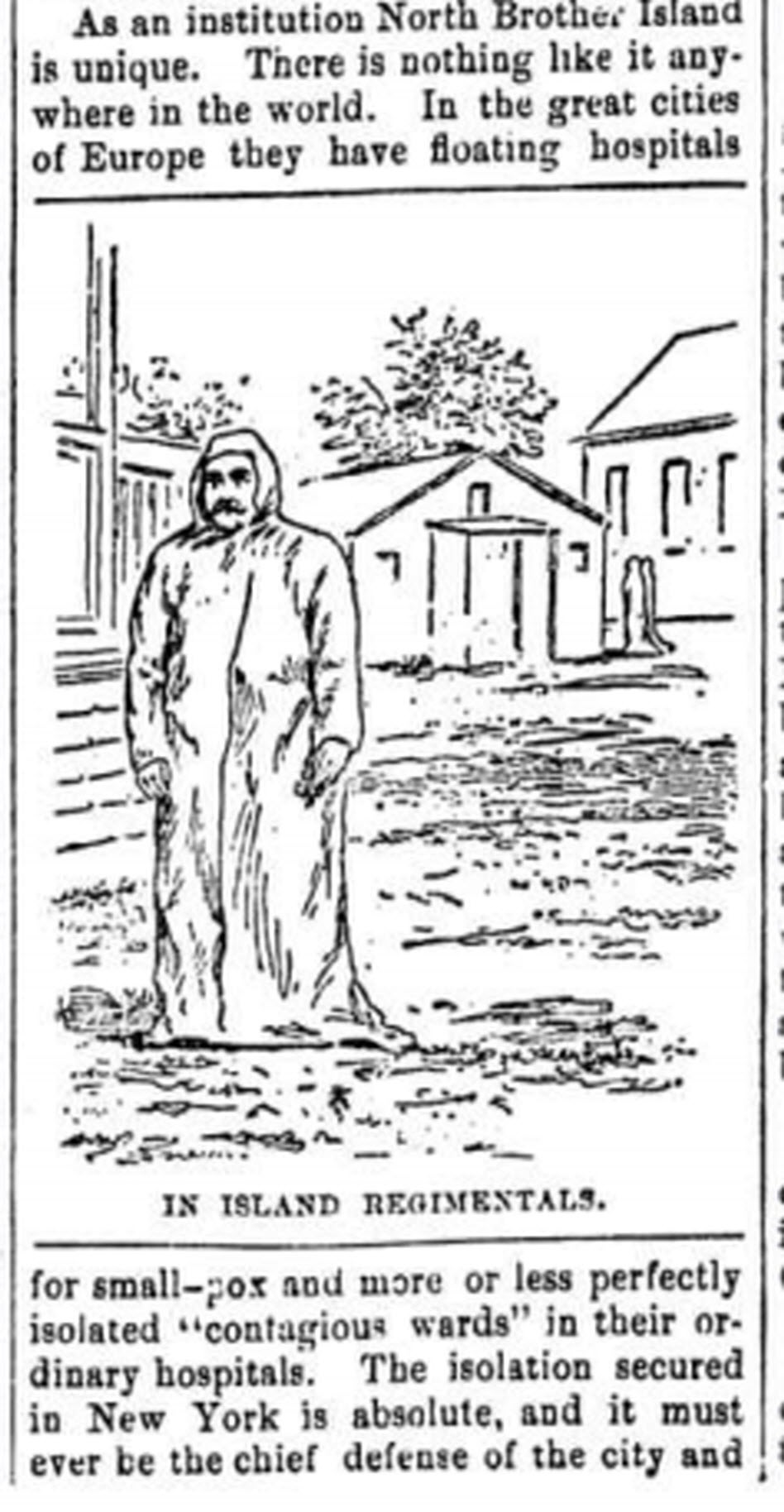
The Abbeville press and banner., October 12, 1892, Image 6/ www.chroniclingamerica.com
Epidemics, quarantines, and communities trying to protect citizens have been age old dilemmas, so it makes sense to look back through history at the strategies employed. There is much to be learned.
If we ask the question “what would have happened if Ebola had struck the U.S. 130 years ago?” we don’t have to look much farther than the location of one of the most recent Ebola patient: New York.
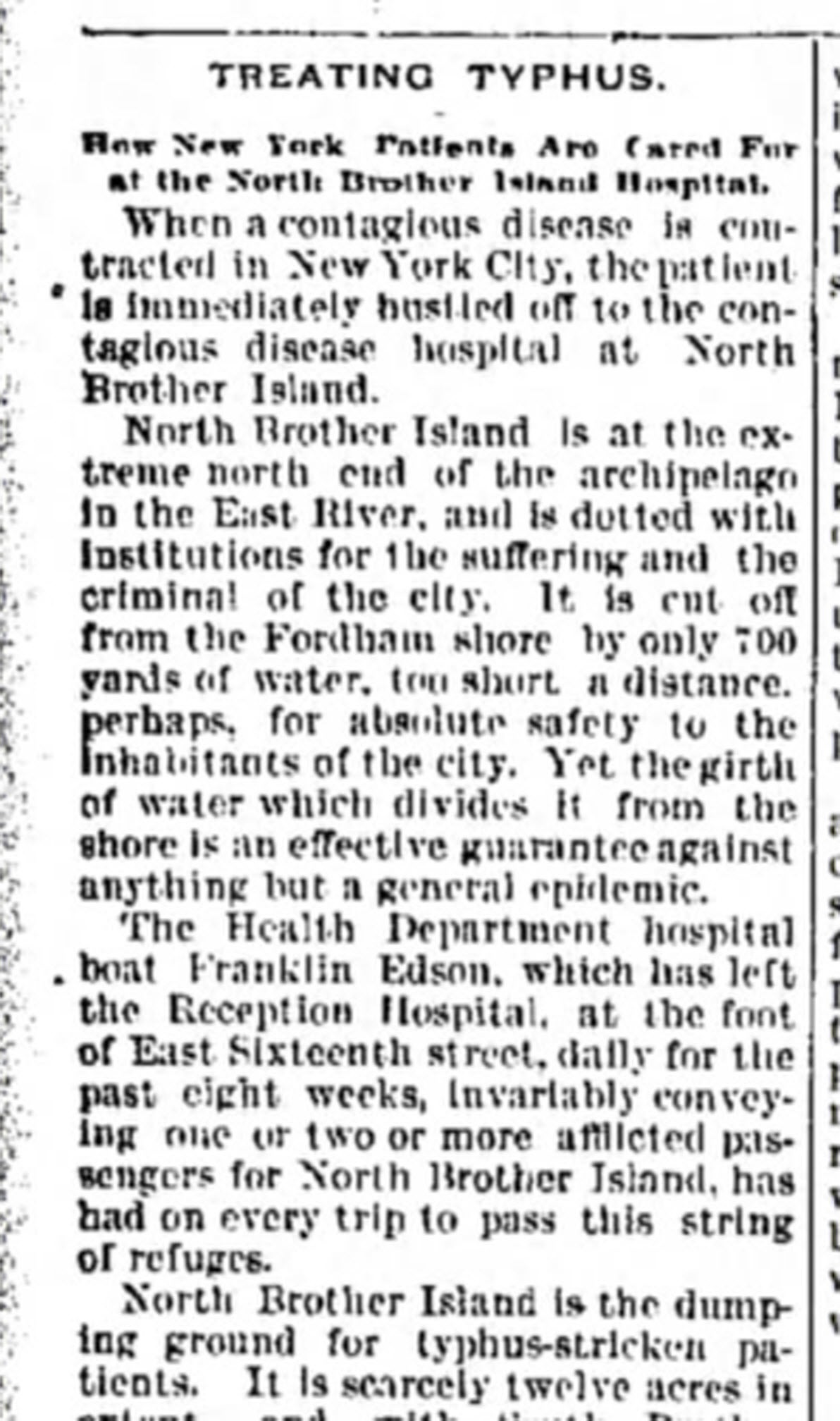
from the Humboldt Republican (Humboldt, Iowa) March 31, 1892
Courtesy www.Newspapers.com
In New York’s East River, tucked between the Bronx and Rikers Island lies North Brother Island, where in 1885 Riverside Hospital was relocated from Blackwell’s Island to isolate and treat small pox patients. From there it expanded to include the quarantine of other diseases.
North Brother Island stands idle today, closed to the public. However from 1907-1910 and 1915-1938 it housed the notorious Typhoid Mary, closing shortly after her death.
Although today the island is closed to the public, anyone can visit virtually with the aid of Google Earth. Join me on a 5+ minute tour of North Brother Island featuring the magazine and newspaper articles of the day, and written, audio and video tours of how it stands today a shell of what it once was. Click here to download and play my Google Earth Historic Tour KMZ file on your computer. It will be added to your “Places” panel in Google Earth under “Temporary Places.” Open the folder and click the “click to play the tour” icon. Be sure your speakers are on! And take time to click to watch the video and view the articles in the placemarks.
Don’t have Google Earth loaded yet? Download it free here.
If you would like to learn to create your own Google Earth family history tours watch this free video and then pick up your copies of Google Earth of Genealogy Volume I and Volume II.
by Diahan Southard | Oct 24, 2014 | 01 What's New, Ancestry, DNA, Jewish
 Ancestry.com has improved the ability of AncestryDNA to find good matches for Jewish, Hispanic and other ancestries that maybe weren’t so precise before. Here’s the lowdown, quoted liberally from Ancestry.com’s press release:
Ancestry.com has improved the ability of AncestryDNA to find good matches for Jewish, Hispanic and other ancestries that maybe weren’t so precise before. Here’s the lowdown, quoted liberally from Ancestry.com’s press release:
The problem: Predicting genetic relatives among customers of Jewish and Hispanic descent and some other groups. “In DNA matching, we are looking for pieces of DNA that appear identical between individuals,” says the release. “For genealogy research we’re interested in DNA that’s identical because we’re both descended from a recent common ancestor. We call this identical by descent (IBD). This is what helps us to make new discoveries in finding new relatives, new ancestors, and collaborating on our research.”
“However, we also find pieces of DNA that are identical for another reason. At one extreme we find pieces of DNA that are identical because it is essential for human survival. At the other, we find pieces of DNA that are identical because two people are of the same ethnicity. We call these segments identical by state (IBS) because the piece of DNA is identical for a reason other than a recent common ancestor. This, we have found, often happens in individuals of Jewish descent.”
“The challenge in DNA matching is to tease apart which segments are IBD, and which ones are IBS….Most Jewish customers find that we predict them to be related to nearly every other Jewish customer in the database….Detecting which cousin matches were real and which ones were bogus has always been a challenge for these populations.”
First step toward a solution: “By studying patterns of matches across our more than half a million AncestryDNA customers, we found that in certain places of the genome, thousands of people were being estimated to share DNA with one another–likely a hallmark of a common ethnicity. Our scientific advancements… have allowed us to effectively “pan for gold” in our matches–by throwing out matches that appear to only be IBS, and keeping those that are IBD.”
“While the problem was more pronounced in customers of Jewish and some Hispanic descents, we observed this problem across all ethnic groups. So, all customers will see increased accuracy of their DNA matches, and significantly fewer ‘false’ matches.”
AncestryDNA results with better matches found by this method “will be available in the coming months,” says the release. They plan to email existing customers when results are ready.
Page 6 of 18« First«...45678...»Last »






